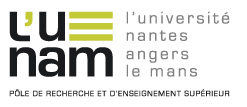Identification of blood immune and metabolic indicators explaining the variability of growth of pigs under contrasted sanitary conditions
Résumé
Background: Health and growth of pigs are affected by the hygiene of housing. Lower growth performance observed in poor hygiene of housing conditions is explained by reduced feed intake and metabolic changes caused by the activation of body defences. In a previous experiment, we reported contrasted average values of body weight gain, concentrations of circulating metabolites, redox and immune indicators in blood of pigs housed in good or poor hygiene conditions during the growing period. This study addressed inter-individual variability in these responses to determine whether a particular blood profile explains average daily gain (ADG) of the pig. Results: The data originated from 160 growing pigs, half of which subjected to a hygiene challenge for 6 weeks (W0 to W6) and the others housed in good hygiene conditions. Pigs originated from two lines divergently selected for residual feed intake (RFI). Individual body weights were recorded during this period, and relative ADG (rADG W0-W6) was calculated as the ADG corrected by the initial body weight measured at W0. Blood samples were taken before (W0) and 3 weeks (W3) after the beginning of the challenge. The analysed dataset consisted of 51 metabolites and indicators of immune and inflammatory responses measured on 136 pigs having no missing value for any variables, when calculated as the differences W3 minus W0 in circulating concentrations. An algorithm tested all possible linear regression models and then selected the best ones to explain rADG W0-W6. Six variables were identified across the best models and correlated with rADG W0-W6 with a goodness of fit (adjusted R 2) of about 67%. They were changes in haptoglobin, global antioxidant capacity of plasma (Biological Antioxidant Power or BAP), free fatty acids, and 3 amino acids: leucine, tryptophan, and 1-methylhistidine. The effects of housing conditions and RFI lines were comprised in the variables of the selected models and none of these conditions improved accuracy of the predictive models, leading to genericity of the pinpointed metabolic changes in relation to variability of ADG. Conclusions: This approach allows us to identify blood variables, whose changes in blood concentrations correlated to ADG under contrasted sanitary conditions.
Origine : Fichiers produits par l'(les) auteur(s)



